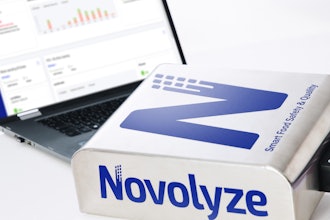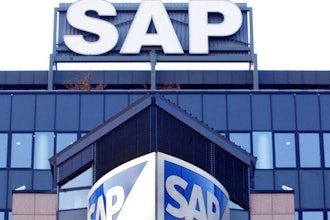As we settle in to what will certainly be an interesting 2017, now is the time to reflect on the previous year and, more importantly, forecast what manufacturers and supply chain leaders can expect in the next 12 months from a technology perspective. Specifically, mid-market companies can best prepare to utilize next-gen solutions to remain domestically and globally competitive in the face of an evolving economic reality by leveraging three technology trends: the cloud, mobile and analytics.
- Continued Cloud Adoption. We’ve already had at least one Year of the Cloud, so calling for another such year in 2017 does feel a bit redundant. In our experience with mid-market companies, though, many leaders are still just beginning to realize the power of the cloud. The hype is coming to reality, so it’s one trend that will only accelerate. As cloud solutions continue to offer value, security and access, more mid-market manufacturers will investigate their cloud storage options.
There is data that aligns with our observations. The Manufacturing ISV Cloud Summit 2016, the first event of its kind entirely dedicated to helping manufacturers learn more about cloud options, surveyed attendees and found that only 18 percent of manufacturers have adopted the cloud — the lowest across all departments (engineering and operations included). Within the next two years, though, the level of adoption is expected to balloon to 70 percent. That seismic shift in how companies store, access and use their data will affect business units throughout the supply chain.
- Mobile Spread Throughout the Supply Chain. More than any other segment of our global economy, the supply chain might be best positioned to take advantage of mobility’s dispersion. In a traditional office building, employees may need to stroll down the hall to a coworker’s office to follow up on a missed email, but generally, the distance between individuals is fairly limited. On the manufacturing floor and throughout the supply chain, however the physical gap between workers, products and tools is a systemic characteristic. Parts circulate around manufacturing plants as they coalesce into a single product. Those products are moved to loading docks where they are stacked into shipping containers that are then whisked away by any one of many transportation devices. For business to manage and monitor all of these transactions, individuals must be armed with technology that can perform at the speed of the supply chain.
It should come as no surprise that mobile phone adoption has nearly reached its ceiling. When the Pew Research Center first conducted its smartphone ownership survey in 2011, just 35 percent of Americans owned a smartphone. As of one month ago, smartphone adoption has more than double to 77 percent, with 95 percent of people owning a cell phone of any kind. For manufacturers, this widespread mobile adoption means a workforce that is largely quite familiar and adept with using mobile technology. As devices become more ubiquitous and powerful, they will serve a growing role in helping bridge the physical gaps throughout the supply chain. From communication to real-time monitoring to analyzing data, mobile technology will help mid-market companies compete in our fast-paced global economy where customers expect split-second service.
- Analytics Across the Enterprise. The final trend that we anticipate shaping how manufacturers use ERP and other systems is how, specifically, teams use data. Connected devices create immense caches of information; what leaders do with that data, though, will define their success in the coming year. Managing data has traditionally been the responsibility of the IT team or individual: they have experience with the computing systems where the data lives, therefore they were on the hook manage it.
With advanced analytics systems built into today’s ERP and cloud systems, organizations must now adapt a data-driven approach from the top down. If we divorce data from its usual technical description and call it what it is — information — it makes sense for it to be a company-wide concern. Leaders at all levels and across all departments rely on information to make smart decisions; the approach to making intelligent decisions emphasizes the importance of being able to quickly and easily crunch large amounts of data.
For those executives interested in harnessing the power of data analytics, today’s tech advances bring welcome news: ERP and cloud solutions with built-in data analysis capabilities can provide newfound visibility into the supply chain and don’t require a degree in computer science. Just take forecasting as one example: any experienced manufacturer knows that historical information can help determine demand. Put simply, if a snow shovel company knows that its busiest month is December and that they typically experience spikes in demand before major snow storms, they can adjust supply accordingly. What if that same supplier could analyze other factors, such as weekday vs. weekend demand, shifting global weather patterns, the cost of plastics, the age and demographics of a given market, urban vs. rural buying habits, number of automatic snow blower sales, apartment complexes vs. homeowners, etc.? These inputs and hundreds more can influence actual sales, and with powerful and user-friendly analytics functionality built into an ERP system, leaders can make forecasting decisions with far more confidence.
For manufacturers and mid-market companies within the supply chain, 2017 represents a very real opportunity to assess your current technology solutions to determine if you are fully taking advantage of the cloud, mobile and analytics. Upgrading any of the three does not always require wholesale changes, so be sure to research new options that can help any aspect of your operation streamline more effectively.
Joe Scioscia is VP of Sales at VAI.























